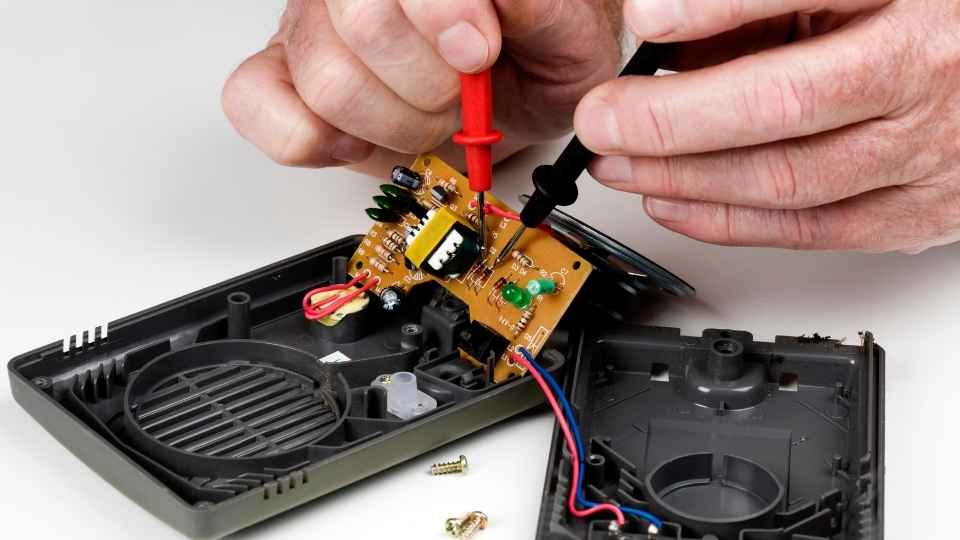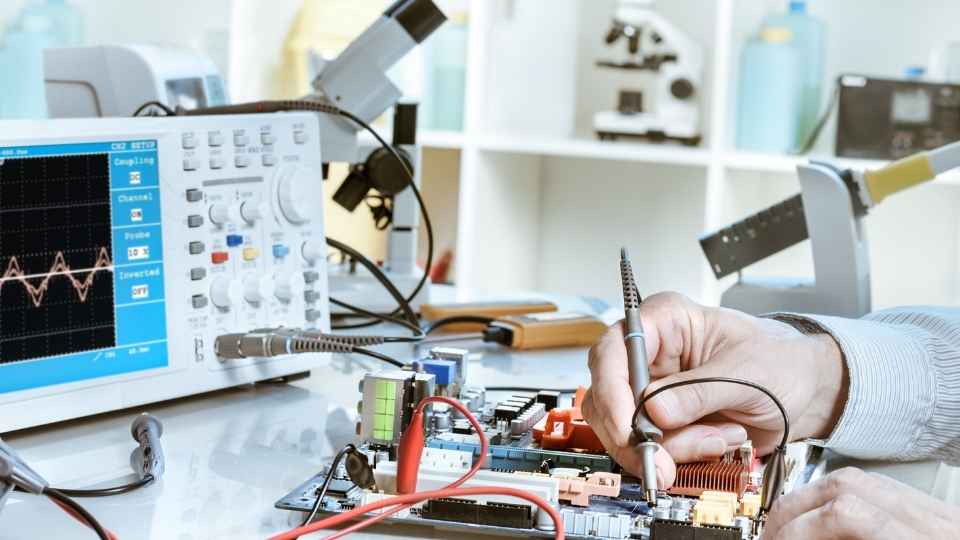
Are you fascinated by the world of electronics? Do you dream of building your own electronic devices, from radios to drones? Look no further!
In this comprehensive guide, we will take you on a journey through the fundamentals of electronics and provide step-by-step instructions for creating your very own gadgets. Whether you are a beginner or have some experience in tinkering with circuits, this article is designed to empower and inspire you to unleash your creativity in the realm of DIY electronics.
So, let's dive in and discover the thrilling possibilities that await!
Key Takeaways
- Understanding the basics of electronics is crucial before building your own electronic devices.
- Building a radio requires selecting components, following circuit diagrams, and considering factors such as signal interference and frequency adjustment.
- Tuning and frequency adjustment are important for achieving the desired frequency range and avoiding damage to components.
- Building simple robotics involves considering mechanical design, integrating sensors, programming skills, and efficient power management.
Understanding the Basics of Electronics
To effectively build your own electronic devices, it is crucial to first grasp the fundamentals of electronics. Understanding the basics will allow you to confidently navigate through the world of circuits, components, and systems.
Electronics deals with the flow of electrons in various materials and how they can be manipulated to perform specific functions. One key concept is Ohm's Law, which relates current (I), voltage (V), and resistance (R). By understanding this relationship, you can calculate values and design circuits that meet your specific requirements.
Additionally, knowledge of basic electronic components such as resistors, capacitors, transistors, and integrated circuits is essential for building any device. These components form the building blocks from which more complex circuits are constructed.
Building Your Own Radio
Building your own radio can be an exciting and rewarding project for electronics enthusiasts. By carefully selecting the components and assembling them according to a circuit diagram, you can create a functional device capable of receiving radio signals.

Throughout the process, attention must be given to factors such as signal interference, tuning, and frequency adjustment to ensure optimal performance.
Radio Signal Interference
Radio signal interference can significantly impact the performance and range of electronic devices. It is crucial to understand the factors that can cause interference and take appropriate measures to mitigate them. Here are four key points to consider:
Electromagnetic Interference (EMI): EMI occurs when electrical devices emit electromagnetic waves that interfere with radio signals. To minimize EMI, proper shielding techniques should be implemented during device design and layout.
Environmental Factors: Natural elements such as mountains, buildings, and trees can obstruct radio signals, leading to reduced range and weaker reception. Positioning antennas in clear line-of-sight locations can help overcome this issue.
Frequency Overlap: Radio signals operate on specific frequencies, and if multiple devices share the same frequency spectrum, interference may occur. Careful selection of frequency bands or using technologies like frequency hopping spread spectrum (FHSS) can alleviate this problem.
Interference from Other Devices: Household appliances, power lines, and nearby electronic equipment can generate unwanted electrical noise that interferes with radio signals. Ensuring proper grounding techniques and using filters or ferrite beads can minimize this type of interference.
Tuning and Frequency Adjustment
When tuning and adjusting frequencies, it is important to have a clear understanding of the specific frequency range required for optimal performance. In the world of electronics, different devices operate within different frequency ranges, and accurately tuning them ensures efficient operation and minimal interference.

To begin with, one must identify the desired frequency range based on the intended application of the device. This can be achieved by consulting technical specifications or conducting research on similar devices.
Once the target frequency range is determined, adjustments can be made using tools such as capacitors, inductors, and resistors to fine-tune the circuitry. It is crucial to follow proper procedures and guidelines while making these adjustments to avoid damaging components or compromising signal quality.
Exploring Simple Robotics
Robust exploration of the field of simple robotics unveils a myriad of possibilities for developing innovative and efficient electronic devices. Simple robotics involves the use of basic mechanical components, sensors, and programming to create autonomous or semi-autonomous machines.
Here are four key aspects to consider when exploring this field:
Mechanical Design: Building a robotic device requires careful consideration of its mechanical structure and components. This includes selecting appropriate motors, gears, linkages, and actuators that enable desired movements.
Sensor Integration: Sensors such as proximity sensors, accelerometers, gyroscopes, and cameras play a crucial role in providing feedback to the robot. Understanding how to integrate various types of sensors is essential for creating intelligent and responsive robots.
Programming Skills: To make a robot function effectively, programming skills are necessary. Knowledge of programming languages like C/C++, Python or Arduino allows developers to control the robot's behavior by writing code that interacts with its mechanical components and sensors.

Power Management: Efficient power management is crucial for maximizing the performance and autonomy of robotic devices. Implementing strategies like energy harvesting or using rechargeable batteries can help extend their operational lifespan.
Beginner's Guide to DIY Drones
The Beginner's Guide to DIY Drones provides a comprehensive overview of drone assembly, flight, and control.
This guide equips beginners with the necessary knowledge and skills to build their own drones from scratch.
It covers essential topics such as understanding drone parts, step-by-step assembly instructions, and detailed explanations on how to fly and control the drones effectively.
Drone Parts and Assembly
To successfully assemble a drone, it is essential to have a clear understanding of the different parts involved and how they fit together. Here are the key components you'll need:
Frame: The frame provides structural support and holds all the other components together. It should be lightweight yet sturdy enough to withstand flight conditions.
Motors: Drones typically have four motors, each connected to a propeller. These motors generate the necessary thrust for flight.

Flight Controller: This is like the brain of the drone, responsible for controlling its stability and maneuverability. It receives inputs from sensors and adjusts motor speeds accordingly.
Electronic Speed Controllers (ESCs): ESCs regulate the power supplied to each motor based on signals from the flight controller.
Understanding how these parts work together is crucial for successful assembly and operation of your drone. Once assembled, you can move on to flying and controlling your creation with confidence.
Flying and Controlling Drones
Flying and controlling drones requires a thorough understanding of the flight controller's inputs and adjustments, as well as the ability to maintain stability and maneuverability during flight.
The flight controller is the brain of the drone, responsible for receiving inputs from various sensors and translating them into control signals for the motors. It allows pilots to adjust parameters such as pitch, roll, yaw, and throttle to control the drone's movement. Additionally, advanced flight controllers offer features like GPS positioning, altitude hold, and autonomous flight modes.
To ensure stability during flight, it is crucial to properly calibrate the flight controller and configure PID (Proportional-Integral-Derivative) settings. These settings determine how quickly the drone responds to pilot input and how it maintains its position in different conditions. By fine-tuning these parameters, pilots can achieve smoother flights with precise control over their drones.
Furthermore, maneuverability plays a significant role in flying drones effectively. Pilots must master techniques such as banking turns, adjusting throttle smoothly for ascent or descent while maintaining stability. They should also consider factors like wind speed and direction when planning maneuvers.

Amplifying Your Sound: Building an Amplifier
Constructing an amplifier allows for the enhancement of sound output in your electronic devices. Here are four key reasons why building your own amplifier can be beneficial:
Customization: By building your own amplifier, you have the freedom to customize its specifications according to your specific needs and preferences. You can choose the type of amplification circuit, power output, and even add features like tone controls or effects.
Cost-effectiveness: Building an amplifier from scratch can often be more cost-effective than purchasing a pre-built one. You have control over the components you use, allowing you to find affordable options without compromising on quality.
Learning experience: Constructing an amplifier is a great way to enhance your knowledge and understanding of electronics. It provides hands-on experience with circuits, soldering, and troubleshooting, which can be valuable skills for future projects.
Satisfaction: There's a sense of accomplishment that comes with successfully building your own amplifier. It gives you the freedom to create something unique and functional while enjoying high-quality sound output from your electronic devices.
Homemade Sensors: A DIY Approach
Now, let's delve into the fascinating world of homemade sensors: a DIY approach that empowers you to create custom sensing devices for various applications.
Homemade sensors offer an exciting opportunity to explore and innovate in the field of electronics. With a few basic components and some creativity, you can design and build sensors tailored to your specific needs.

Whether you want to monitor temperature, detect motion, or measure light intensity, homemade sensors provide a cost-effective solution with endless possibilities. By utilizing readily available materials like resistors, capacitors, and transistors, you can construct sensors that rival their commercial counterparts in performance.
Furthermore, this DIY approach allows for customization and experimentation beyond what is typically offered by off-the-shelf options. You have the freedom to tweak sensor specifications and calibrate them according to your preferences.
Frequently Asked Questions
Can I Use the Same Basic Principles to Build Other Electronic Devices Like Smartphones or Computers?
Yes, the same basic principles of electronics can be applied to build other electronic devices such as smartphones or computers. However, the complexity and specialized components required may vary significantly compared to building radios or drones.
How Do I Choose the Right Components and Materials for Building My Own Electronic Devices?
To choose the right components and materials for building electronic devices, one must carefully consider factors such as functionality, compatibility, durability, and cost. Thorough research and understanding of technical specifications are crucial in making informed decisions during the selection process.
What Safety Precautions Should I Take When Working With Electronic Components and Soldering?
When working with electronic components and soldering, it is crucial to prioritize safety. This includes wearing protective gear such as gloves and goggles, working in a well-ventilated area, and ensuring that all equipment is properly grounded to prevent electrical shocks.
Are There Any Legal Restrictions or Regulations I Should Be Aware of When Building My Own Electronic Devices?
When building your own electronic devices, it is important to be aware of any legal restrictions or regulations that may apply. This ensures compliance and prevents potential issues with authorities or safety concerns.
Can I Sell or Commercially Use the Electronic Devices I Build on My Own?
When considering the ability to sell or commercially use personally built electronic devices, it is important to understand the legal restrictions and regulations that may apply in your jurisdiction. It is advisable to consult with a legal professional for guidance on compliance.

 Basic Electronics ConceptsEssential ToolsCircuit Design BasicsMicrocontrollersDIY Electronics ProjectsRoboticsPrivacy PolicyTerms And Conditions
Basic Electronics ConceptsEssential ToolsCircuit Design BasicsMicrocontrollersDIY Electronics ProjectsRoboticsPrivacy PolicyTerms And Conditions
